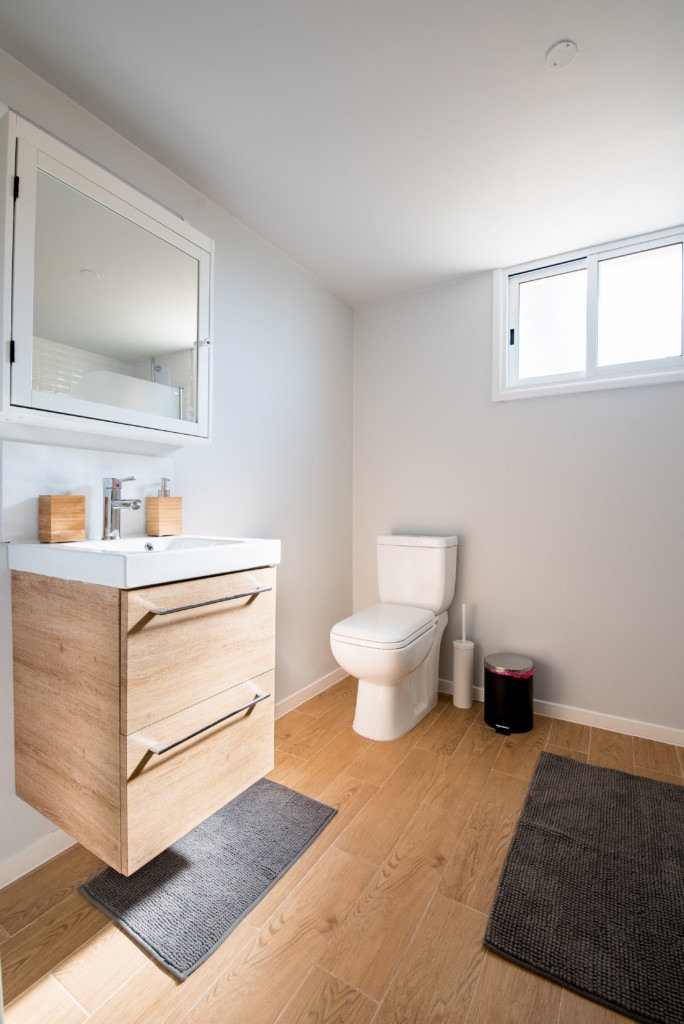Although some designers or contractors might advise against installing hardwood floors in a bathroom, we think it can be a great idea, especially if you put certain safety measures in place to ensure that moisture-related problems do not crop up.
Should You Install Hardwood Floors in a Bathroom?
Installing hardwood floors in your bathroom is a great design decision. One big reason is for the sake of style. You can really elevate the look of the space, making for a more elegant bathroom. Hardwood floors also provide you with an overall more versatile look than tile. Hardwood floors, specifically wide plank floors, provide a truly timeless style.
Installing hardwood floors in your bathroom will also provide a sense of continuity if you also have them installed throughout the rest of your home.
They’re also great for a bathroom because they feel warm underfoot, especially compared to tile. This makes them a delight to walk on during cold winter mornings.
There are a multitude of design options when you choose hardwood floors––they can work with nearly any style. Try pairing white-washed or gray-washed wide plank floors with white or light-colored cabinetry and toilet, cabinets, and sink.
Installing Hardwood Floors in a Bathroom: Precautions
Although hardwood floors can be a great choice for a bathroom, there are definitely a few things to keep in mind and precautions to take if you are looking to install hardwood floors in your bathroom.
We highly recommend choosing engineered hardwood floors for your bathroom because they are less susceptible to moisture damage and are more dimensionally stable than solid wood floors.
We also recommend taking extra steps to prevent moisture from damaging your hardwood floors in your bathroom, such as:
- Placing bath mats and rugs in areas that tend to accumulate water, such as in front of the shower/tub, sink, and near the toilet. These also give you a chance to add flair to your space.
- Installing a ventilation system/ceiling fan. Opening windows after taking a shower/bath in order to make sure there’s ample ventilation to help evaporate any moisture that accumulates on the floor.
- Immediately wiping up any spills and puddles as soon as they happen so the floor/finish doesn’t absorb the moisture.
- Ensuring that your contractor takes moisture content and relative humidity measurements before and after installing the floors to check for any pre-existing moisture problems in the slab or subfloor.
- Using a subfloor underlayment that help to control moisture, such as Fortifiber Aquabar B. consult with your contractor to find the best products for your project, or speak with a wide plank expert for guidance.
- If you are especially concerned about moisture accumulating on your floors (for example, if you have young children in your house), you might want to consider installing hardwood floors in a bathroom that doesn’t get much use, such as a guest bathroom.
Although there are some precautions to take, we generally think that the pros outweigh the cons as long as you take the measures outlined above and hire the right contractor to complete the installation.
Click here to view our wide plank flooring projects and draw some inspiration for your project.
Request a quote for wide plank flooring and tell us more about your project. In addition to helping you find the perfect products, we can also put you in touch with experienced contractors who would be the right fit for the job. You can also call us at 877-697-5265 or email info@wideplankfloorsupply.com to get in touch with us.
